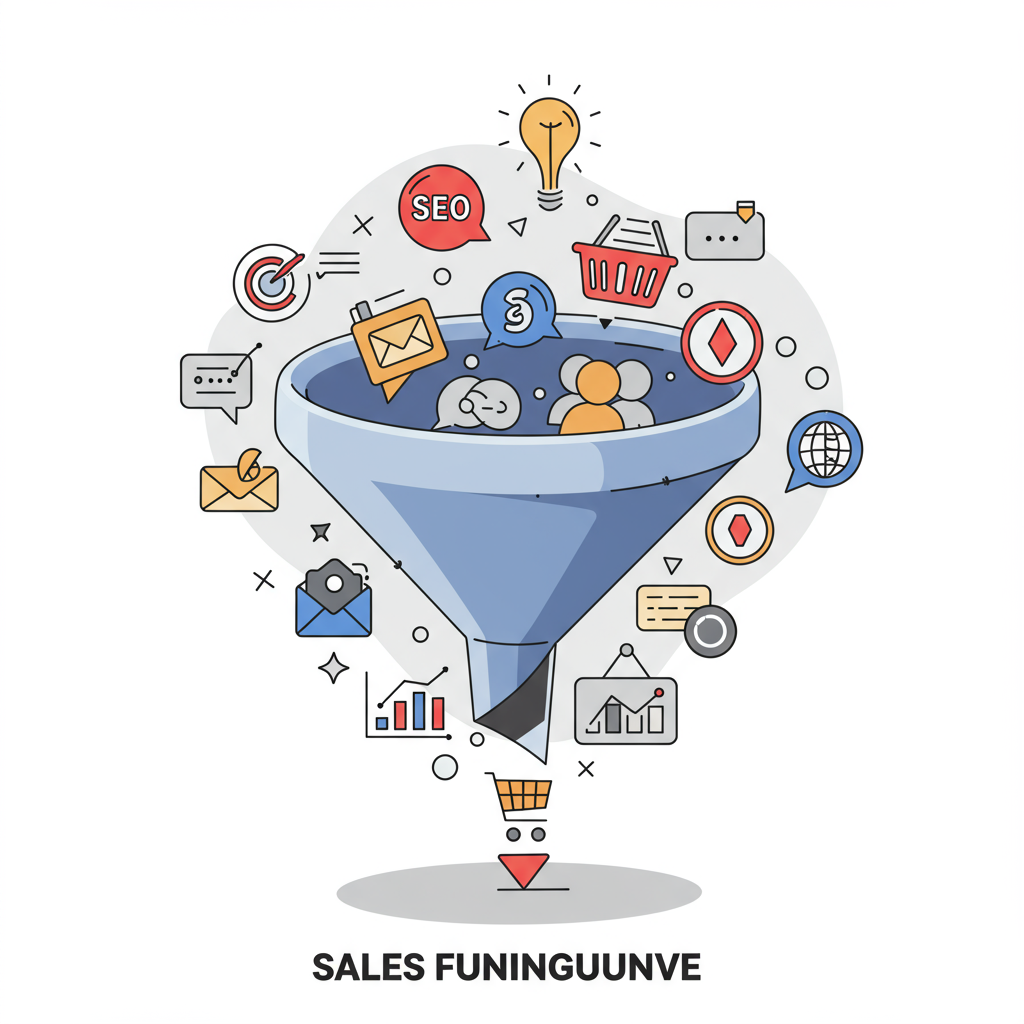Unlock Growth and Boost Conversions for Your E-commerce Store
As a Shopify merchant, I know firsthand the excitement of launching a store and the challenges of making it truly thrive. It’s not enough to just have great products; you need a strategic approach to guide potential customers from discovery to purchase and beyond.
That’s where understanding and optimizing your marketing funnel comes into play. Think of it as a journey your customers take, and our goal is to make that journey as smooth and compelling as possible.
Today, I want to share with you some of the most effective techniques I’ve learned and implemented to optimize the marketing funnel specifically for Shopify stores. We’ll cover each stage, from attracting initial interest to fostering long-term loyalty.
Let’s begin with the **Awareness Stage**. This is where potential customers first learn about your brand or products. Our primary objective here is to cast a wide net and capture attention.
One of the most powerful tools at our disposal is Search Engine Optimization (SEO). I always recommend optimizing your product titles, descriptions, and blog content with relevant keywords that your target audience is searching for.
Beyond on-page SEO, consider creating valuable blog posts that address common customer pain points or interests related to your products. This positions you as an authority and drives organic traffic.
Paid advertising, such as Google Ads and social media campaigns on platforms like Facebook and Instagram, is another crucial component. I find that highly targeted ads can quickly bring qualified traffic to your Shopify store.
Remember to use compelling visuals and clear calls to action in your ad creatives. A/B testing different ad variations can significantly improve your return on ad spend.
Social media marketing isn’t just about ads; it’s about building a community. I encourage consistent posting, engaging with followers, and leveraging trending topics to increase brand visibility and direct traffic to your store.
Once we’ve captured their attention, we move into the **Interest/Consideration Stage**. Here, our goal is to engage visitors, educate them about our products, and build desire.
Your product pages are paramount. I always ensure they feature high-quality images, detailed and persuasive descriptions, and, crucially, customer reviews. Social proof is incredibly powerful.
User-generated content (UGC), like customer photos or videos using your products, can be integrated into product pages and social media. I’ve seen this significantly boost engagement and trust.
Email marketing plays a vital role here. A well-crafted welcome series for new subscribers can introduce your brand story, highlight popular products, and offer an incentive for their first purchase.
Personalization is key. I try to segment my audience and tailor content based on their browsing history or previous purchases. This makes the experience feel more relevant and less generic.
Offering live chat support on your Shopify store can also address questions in real-time, removing barriers to purchase and building immediate rapport with potential customers.
Next up is the **Decision/Conversion Stage**, the moment we aim to turn interest into a sale. This is where friction needs to be minimized and trust maximized.
A streamlined checkout process is non-negotiable. I always review my Shopify checkout flow to ensure it’s intuitive, requires minimal steps, and offers various payment options.
Trust signals are incredibly important. Displaying security badges, customer testimonials, and clear return policies prominently on product pages and at checkout can alleviate buyer hesitation.
Clear and compelling Calls to Action (CTAs) are essential. Buttons like “Add to Cart” or “Buy Now” should stand out and clearly communicate the next step.
Limited-time offers, discounts, or free shipping thresholds can create a sense of urgency and encourage immediate purchase. I’ve found these to be very effective conversion boosters.
Finally, we enter the **Retention/Loyalty Stage**. A sale isn’t the end; it’s the beginning of a relationship. Our aim is to turn one-time buyers into loyal, repeat customers.
Post-purchase email sequences are crucial. I send thank-you emails, order confirmations, shipping updates, and follow-ups asking for reviews. This keeps the customer engaged and informed.
Implementing a loyalty program, where customers earn points for purchases that can be redeemed for discounts, is an excellent way to encourage repeat business.
Exceptional customer service is the bedrock of loyalty. I ensure that any inquiries or issues are handled promptly and courteously, turning potential negative experiences into positive ones.
Upselling and cross-selling relevant products post-purchase or through targeted email campaigns can increase customer lifetime value.
Building a community around your brand, perhaps through a private Facebook group or exclusive content, can foster a deeper connection and turn customers into advocates.
To truly optimize, we must constantly analyze. I regularly dive into my Shopify analytics and Google Analytics to understand customer behavior, identify drop-off points, and measure the effectiveness of my strategies.
A/B testing is your best friend. I continuously test different headlines, product images, CTA buttons, and email subject lines to see what resonates best with my audience.
Tools like heatmaps and session recordings can provide invaluable insights into how users interact with your store, revealing areas of confusion or friction.
Remember, funnel optimization is not a one-time task; it’s an ongoing, iterative process. The market changes, customer preferences evolve, and your strategies should too.
By focusing on each stage of the marketing funnel and continuously refining your approach, you can significantly improve your Shopify store’s performance, boost conversions, and build a thriving e-commerce business.
What do you think about this article? I’d love to hear your thoughts and any strategies you’ve found particularly effective for your own Shopify store.






